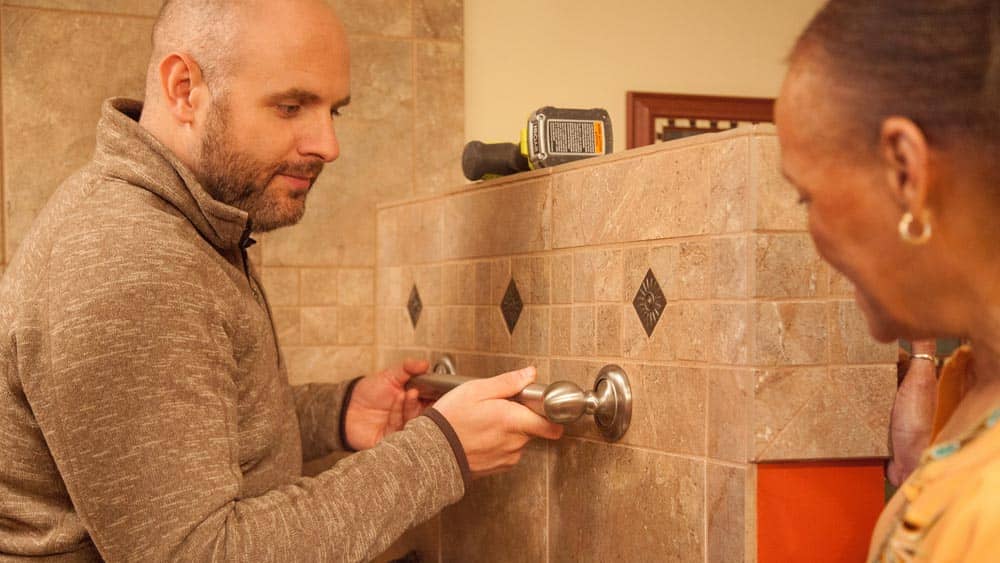

Kitchen Safety for Older Adults
The kitchen is often the most utilized room in a home because of all the cooking, eating, cleaning, and conversing that occurs there. Because these activities are so routine and automatic, it’s easy to overlook potential challenges and hazards a kitchen poses for aging adults. Here are suggestions to help your aging loved one stay safe in the kitchen.
How To Assess Potential Hazards
Family or professional caregivers can usually help with at least some adaptations to make a kitchen safer and more user-friendly for a senior. Before a caregiver can assist in this way, there needs to be an assessment of how the older adult uses the kitchen to identify any issues and needed fixes. In general, falls are among the leading causes of injury for seniors, and a kitchen can be a land mine of fall risks. For any home area, including kitchens, the caregiver should be on the lookout and address these potential hazards:
- Throw rugs that lack nonslip backing
- Cracked flooring or loose tiles
- Extension cords
- Floor clutter that can cause tripping
- Slippery floor surfaces
- Cabinets, light bulbs, etc., that are hard to access
- Appliances that are difficult to operate
- Low or poor lighting
- Frayed electrical cords and overloaded plugs
- Leaks
The older adult or caregiver should be able to make some of the necessary changes themselves, but when it comes to structural, electrical, or plumbing changes, they should hire a trusted handyperson or certified contractor. If expense is a factor, the senior or caregiver should check with their local area agency on aging for programs that offer free or low-cost home improvements to qualifying seniors.
Other safety considerations can include:
- Making sure smoke alarms, carbon monoxide alarms, and fire extinguisher systems are operable.
- Securing, labeling, and storing hazardous materials, such as toxic cleaning agents, keeping them separated from food-handling and cooking areas.
- Warning seniors not to get atop tables, chairs, or stools when reaching for upper cabinet shelves, high open shelves, or light bulbs, as this is a fall just waiting to happen. Conversely, lower cabinets can be a problem for some seniors to access.
- Safely stowing away knives and other sharp utensils and putting up any breakable glass or ceramic vessels that could shatter on the floor.
- Having a wearable alert device or a nearby voice-activated one, which can be a lifesaver if a senior suffers a medical incident in the kitchen.
- Thinking of ways to prevent burns. Seniors risk getting kitchen burns if they wear loose-fitting, flammable clothes, pick up hot pots or pans without an oven mitt, lose their balance or grip when carrying pots of hot water, or leave ignitable materials near open flames.
Seniors and Food-Borne Illness
The risk of food-borne illness increases as older adults struggle to be as rigorous as they should in cleaning cutting boards and counter surfaces to avoid cross-contamination, cooking foods to safe temperatures, and storing perishables within prescribed time limits to prevent food poisoning. With aging and certain medical conditions, compromised immune systems become less tolerant of gut illnesses caused by undercooking, spoilage, or contamination, thus making safe food handling even more important.
Many kitchen risks increase for seniors with cognitive, mobility, or balance issues. This is where caregivers, in consultation with a physician or care manager, can find adaptations best suited to the older person’s specific challenges and needs.
Then there’s the increased challenge older adults with disabilities face in navigating the kitchen if it has hard-to-reach cabinets, sinks, or counters; non-ADA-compliant appliances; or heavy, awkward pots, pans, or other equipment. Simply consolidating the most used items into one or two easy-to-reach spaces may be part of the answer. The reconfiguration or addition of new cabinets and countertops or the purchase of ADA-compliant appliances may also be necessary.
Some older adults may also find that prepping and cooking food is a burden due to various health conditions, which can lead to poor eating habits and a lack of needed nutrients. Caregivers can assist with meal planning and preparation to fit the senior’s needs, whether making, labeling, and storing a week’s worth of main meals or meal-prepping several simple but nutritious meals throughout the day.
A meal delivery service may be an option for seniors or families who can afford it. For low-income seniors, an area agency on aging may deliver free meals or refer them to an organization that does.
More Kitchen Tips for Family Caregivers
The kitchen should be a pleasant space, not a battleground. That’s why it’s important that family caregivers work within the senior’s abilities, interests, and habits to make the kitchen easy and safe to navigate, regardless of how much or how little they actually use it for cooking, eating, or social interaction.
If the older adult prefers eating alone, the caregiver could introduce some personal elements into the space, such as photographs, artwork, plants, or music the senior may enjoy. If the older adult enjoys the company of family and friends, the caregiver should make space for guests and keep devices nearby so the senior can call, text, or video chat with loved ones. If the older adult enjoys browsing the web or watching a favorite program, the caregiver should make sure the senior can connect online or stream. These small touches can do wonders to brighten, warm, and add life to a space and, by extension, help the senior feel connected to the world. Social connection is key to good emotional health in seniors, especially those prone to feeling isolated, which can lead to depression.
At the end of the day, just about everything in a kitchen has the potential to harm or heal. It’s up to the older adult and their caregiver to make it a place of emotional and physical wellness rather than the opposite. Kitchens are meant to be the gateway to good food and conversation and the place where memories are made and shared. With the right intention and attention, it can be all that and more for seniors and loved ones alike.
How Right at Home Can Help
If a family member or friend is not available to be a caregiver, a professional in-home caregiver may be the answer to help a senior safely age in place at home. Right at Home’s trained caregivers can help assess a home for potential hazards and help make adjustments needed so the senior can most safely and efficiently interface with the kitchen and other areas. Download our FREE Aging-in-Place Guide for tips on managing potential hazards in the home. Or, use our office locator to contact the Right at Home office nearest you for more information.
Interested in receiving ongoing tips, information, and advice about the aging journey delivered straight into your email inbox? Subscribe to the Caring Right at Home e-newsletter today.







